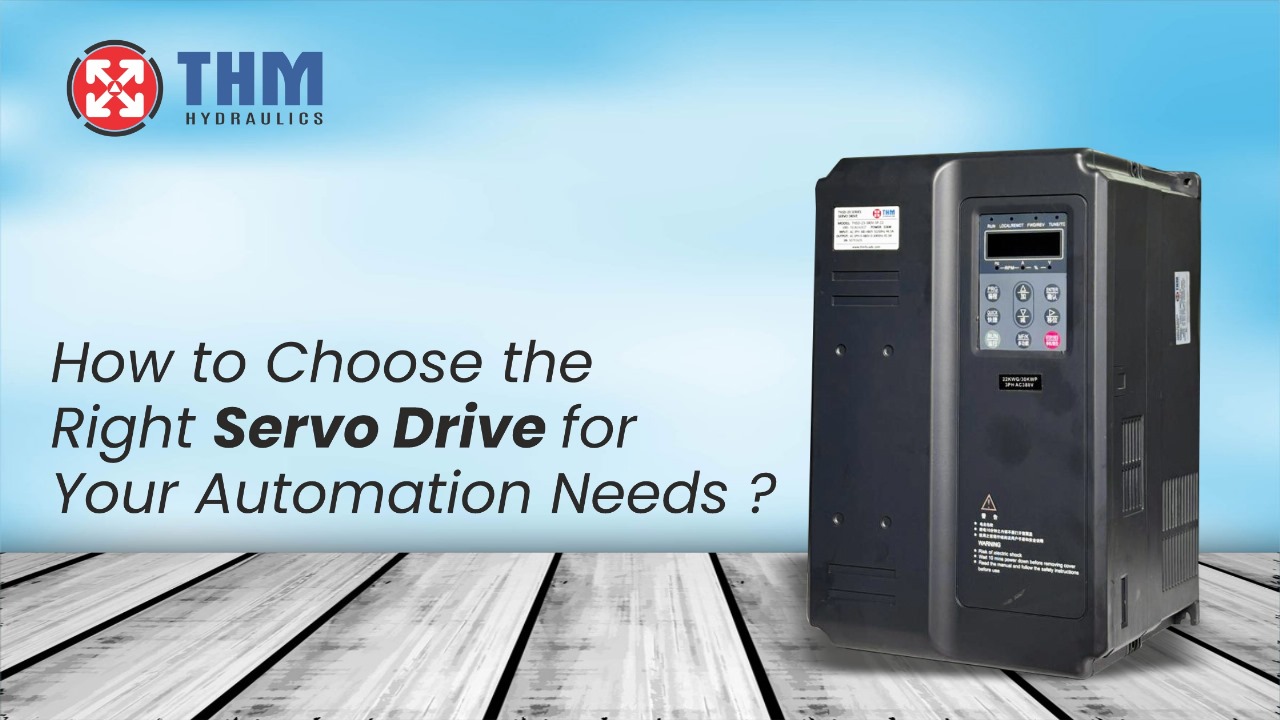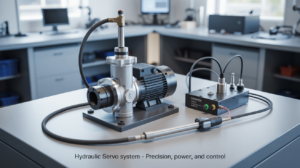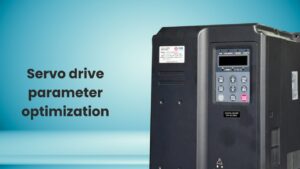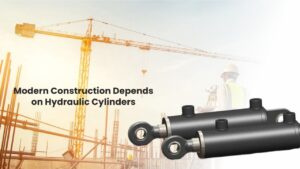Today, automation is very important in helping industries become more productive, precise and efficient. A servo drive is a key part of any automated system since it manages the motion of servo motors. Picking the proper servo drive helps achieve the best results, save energy and maintain dependability for years.
How Does a Servo Drive Work?
A servo drive is a device that amplifies the commands it receives from a controller and changes the power to the servo motor according to the feedback. A servo drive works by using a closed-loop system which allows it to regularly monitor and correct position, speed and torque to ensure accuracy.
Key Components:
- Most of the time, the input command comes from a PLC or motion controller.
- Feedback system: It is common to use encoders or resolvers.
- Power amplifier: Controls the amount of voltage and current.
- Output to motor: Changes in response to what is happening at the moment.
There are various types of servo drives:
Learning about the various types of servo drives allows you to pick the right one for your project.
1. AC Servo Drives
- Works on AC motors.
- You can find this in robotics and CNC machines.
- Ensures accurate and smooth movement.
2. DC Servo Drives
- Uses DC motors.
- Perfect for applications that require less power and money.
- It is easier to operate.
3. Digital servo drives are a type of motor control system.
- Microcontroller-based, programmable.
- Can be used in complex automation environments.
- Allows communication over networks by using EtherCAT or CANopen.
4. Analog versions of Servo Drives
- Uses analog signals such as ±10V.
- It’s easier to set up, though there are fewer features than with digital drives.
Should you pick an ac servo drive or a dc servo drive?
These points should be considered when choosing between AC servo drive and DC servo drive:
| Feature | AC Servo Drive | DC Servo Drive |
| Type of Motor | AC motor | DC motor |
| Maintenance | Low | High (because of wear on the brush) |
| Where They Are Used | Robotics, CNC, automation | Basic conveyor systems |
| Expense | More expensive | Less expensive |
In general, use AC drives when you need accurate control and a large amount of power. DC drives are a better choice if you need something simple and cost-effective.
Things to Remember When Choosing a Servo Drive
While selecting a servo drive for your automation project, remember these points:
1. Motor Compatibility
Ensure the servo drive matches the type of motor (AC or DC), its voltage and the feedback method (encoder, resolver, etc.).
2. Application Requirements
- Make a list of the features you require.
- Torque and speed are the two main characteristics of an engine.
- The type of motion profile can be linear, rotary or a combination of both.
- The environment includes temperature, humidity and vibration.
3. Power Rating
Look at the voltage and current ratings of the servo drive. It is best to pick a drive with more storage than your motor requires to handle sudden increases in workload.
4. Control Interface
Make a choice between analog, pulse train and fieldbus interfaces. Digital servo drives are more flexible than analog ones.
5. Feedback System
- Select a drive that is compatible with your motor’s feedback device.
- Incremental encoder
- Absolute encoder
- Resolver
Uses for Servo Drives
Servo drives are commonly found in different sectors for controlling movements and achieving precise positions. Servo drives are often used for the following applications:
- Robotics includes articulated arms and SCARA robots.
- Machines used in CNC include lathes and milling machines.
- Packaging involves labeling, sorting and palletizing.
- Printing – Accurate positioning of paper
- The production of semiconductors involves very small movements.
Best Servo Drive Wiring Diagram Fundamentals
The correct wiring of a servo drive guarantees the system is safe and efficient. Here is a basic explanation:
- Power Input: You can use AC or DC power to supply this device.
- Output to the Motor: The wires are connected to the servo motor windings.
- Feedback Input: Takes information from the motor’s encoder/resolver.
- The input of the control signal is made through an interface with the controller (PLC, PC, etc.).
- Protective Grounding: To ensure safety and to reduce noise.
- Always go through the manufacturer’s manual when you are wiring your servo drive.
How to Set Up a Servo Drive
How do you program a servo drive? Depending on the brand and type of drive, the process consists of the following steps:
- Set up the software that comes with your printer.
- The drive can be attached to a PC using USB, RS-232 or Ethernet.
- Adjust the motion settings such as acceleration, deceleration and the maximum amount of torque.
- Adjust the PID control loops for the best outcome.
- Use the settings to run tests and confirm that everything is working as expected.
The user interface on THM Thude is created to make the process straightforward.
Conclusion – Key Takeaways for Choosing the Right Servo Drive
The right servo drive should match the system’s requirements, the application it will be used for and its compatibility with the system. Having knowledge of servo drives, their types and the difference between servo drives and VFDs will aid in your decision-making when using robotics, packaging machines or CNC equipment.
Do you require reliable servo systems in India? Try THM Thude, a reputable brand that provides dependable and high-quality servo drives for industrial automation.
FAQs
A servo drive uses feedback to control position, speed and torque, but a VFD does not use feedback and is mainly used to control motor speed. Servo drives are chosen for precise motion and VFDs are used when a steady speed is required such as for fans and pumps.
Not necessarily. The electrical features of the motor and the servo drive must be suited to each other. Check whether the device is suitable for your TV before connecting it.
Most of the time, a PLC, motion controller or industrial PC is used to control the servo drive.
Yes. Now, digital servo drives can be programmed to follow certain motion patterns, set limits and use control loops.



